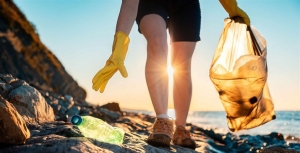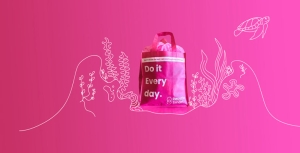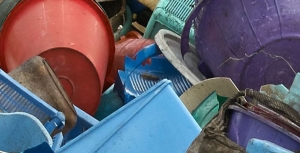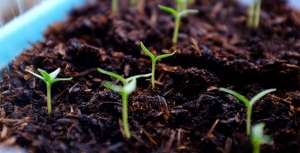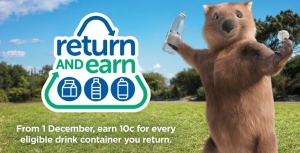Displaying items by tag: recycling
Plastics reduction – have your say on proposed actions
The EPA has released a discussion paper on a plan to reduce the use of plastic and the quantity of waste generated. Comments may be made via a survey or you can email a submission to This email address is being protected from spambots. You need JavaScript enabled to view it. (closing date 6 November).
Due in part to past litter reduction initiatives such as the Return and Earn recycling scheme and the phase-out of lightweight plastic bags, there has already been a 49% reduction in litter density since 2018–19.
What about a major source of plastic – synthetic turf?
As an aside, there is a major source of plastic that is only going to get worse that is from synthetic turf playing fields and its general use for surfaces in parks and school grounds. This issue doesn’t come under the plan but could be referred to in submissions.
There is no effective method for recycling this product. Microplastics that end up in the environment from the break-up of the plastic grass blades and loose infill are a major concern that is being monitored by the AUSMAP project. There will be more about research on this in a future issue of STEP Matters.
Strong action is needed
There are still frightening statistics about the impact of litter and the volume of plastic ending up as waste in landfill. For example, in 2022–23, NSW alone generated 891,000 t of plastic waste. Only 14% of this was recycled.
About 79% of litter washed into our waterways is plastic. Plastic litter can have disastrous consequences and significant cost on the environment and communities.
For every piece of litter on land in NSW, nine times more can be found in our waterways.
As littered plastic items are exposed to water, sunlight and rain, they can break down over time into microplastics and leach potentially harmful chemicals into the environment. It can also entangle or be swallowed by marine animals.
Taking into account the direct costs of cleaning up litter, as well as the indirect costs associated with loss of amenity and environmental values, litter costs NSW more than $500 million.
Is the reduction plan good enough?
The Boomerang Alliance’s view on the proposals is that the plan includes some sound policy actions and a timeline for implementation, but many of these proposed measures may not deliver the needed reductions in plastic litter and waste. Here is a summary of their main points
Reusable cups at food venues (applied from 2027)
Currently, food venues may voluntarily accept reusable cups, but this needs to go further. All outlets should be required to offer reusable cups and containers or accept BYO, reducing reliance on disposables. In Europe, dine-in customers are never served with disposable food ware.
Recyclable single-use cups and containers (2027)
While recyclable or compostable containers are already common, the issue lies with inadequate collection systems. Simply labelling items for recycling won’t address the core issues.
Return and earn for single-use cups and containers (2030)
This proposal is both tokenistic and impractical. What we need is a robust reusable cup return system. Other countries have already implemented these models, which reduce plastic waste and greenhouse gas emissions. These systems could be adopted now.
Tethered caps on bottles (2030)
One never knows whether loose caps from milk and soft drink bottles can be recycled. Attached caps solve this question. This strong policy is already in place in Europe. So, why wait until 2030? Propose that it be introduced by 2026.
National approach to cigarette butt litter (2027)
Ideally eliminate cigarette filters altogether, as recommended by the World Health Organisation. A reusable holder could replace the need for single-use filters.
Elimination of harmful chemicals in packaging (2027)
While this is a positive step, if chemicals are harmful, they should not be used in the first place. Mandatory labelling of ‘green-listed’ chemicals is also essential.
Phase-out of microplastics (2025)
Support this, but there should be stronger measures, such as mandating filters on washing machines to capture microfibres, rather than relying on a proposed rating system by 2027.
Standards for reusable shopping bags (2025)
Require plastic shopping bags to be stored out of sight at the point of purchase and only provided on request, unless they are clearly designed for reuse or are part of an extended producer responsibility. Reusable bags must be durable, contain recycled content, and be recyclable at the end of their lifecycle.
Phase-out of various plastic items (2027)
Agree with the phase-out of plastic carrier bags, food tags, and other non-compostable items.
Ban on lighter-than-air balloons (2025)
This ban could be implemented immediately. There is no need to wait until 2025.
Phase out of expanded and foamed plastic trays and packaging (2025)
Support this phase-out and believe it should be done as soon as possible.
A final word on the Australian recycling label
This system needs to ensure that labelled items are genuinely recycled, reused, or composted. Without this, it’s simply greenwashing.
A new recycling service has come to Ku-ring-gai
At the August council meeting it was decided to trial the introduction of a new recycling service of items that are currently not included in council’s recycling contract. After a two year trial period its cost effectiveness will be assessed. Items covered by the service include:
- soft plastics
- clothing and linen
- small household appliances such as electrical tools, hairdryers, irons, toasters, laptops and game consoles
- coffee capsules, batteries, medicine containers, printer cartridges and sealed paint tins
Residents are able to book a collection from their home direct to the recycling depot. Residents can use their own bags to separate recyclable items from their general waste. Bags can also be provided by RecycleSmart. Make your booking via the RecyleSmart app.
Collection of larger items can be booked as an add-on to an existing pickup.
Hard plastics can now be taken to the Thornleigh Community Recycling Centre
In great news for the circular economy, the Thornleigh Community Recycling Centre is now able to accept hard plastics! This centre is available for Ku-ring-gai residents as well as Hornsby. Unwanted plastic buckets, crates, washing baskets, bottle caps and lids, toys, DVD and CD cases, plastic plant pots and plastic storage containers are among the plastic items that are presently not accepted in your home yellow-lid recycling bin but can now be taken to the centre where they will find a new life as a bollard, post or pallet.
The plastic items have to meet certain conditions:
- completely made from plastic and contain no metal parts, batteries or electronic components
- less than 20 kg in weight
- less than 1.5 m in length
The centre is at 29 Sefton Road, Thornleigh, is open Tuesday to Friday from 8.30 am to 4 pm and Saturday from 8.30 am to 12 pm.
Going to Ground: How used Coffee Beans can help your Garden and your Health
Did you know that your morning cup of coffee contributes to six million tonnes of spent coffee grounds going to landfill every year? This does not have to be the fate of your caffeine addiction and there are many opportunities to up-cycle spent coffee grounds into valuable commodities.
From fresh fruit, to roasted bean, to used up grounds, coffee’s chemical composition offers a range of uses beyond making your daily brew.
Potential applications range from biofuels, to health products, and fertiliser for farms or your garden. So why are we throwing this precious product away?
The answer is that processing and production can be more complex than you might imagine – even when we’re talking about simply using coffee grounds in your garden. What’s more, many recycling initiatives to turn waste coffee into valuable commodities are still in their early stages.

You may have noticed that some cafes now offer free spent coffee grounds for customers to take home and use in the garden. In theory, this is a great initiative but the reality is that fresh coffee grounds are high in caffeine, chlorogenic acid and tannins that are beneficial to humans but toxic to plants.
The spent coffee must be detoxified by composting for a minimum of 98 days for plants to benefit from the potassium and nitrogen contained in the roasted beans. Without adequate composting, the benefits are scant (see below). So if you do take some coffee grounds home from your local cafe, make sure you compost them before sprinkling them on the veggie patch.
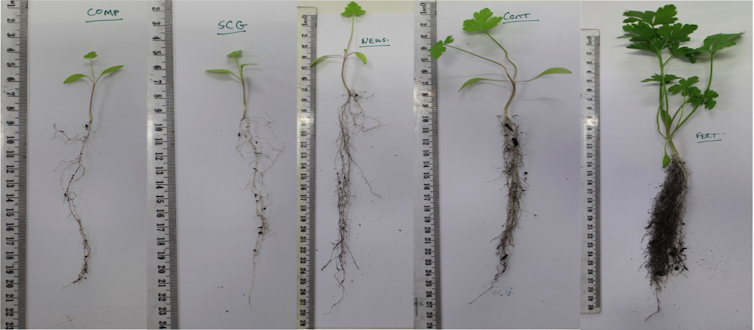
The good news is that properly composted coffee grounds offer a cheap alternative to agro-industrial fertilisers, potentially helping urban communities become greener and more sustainable. Savvy businesses have begun processing coffee grounds on a commercial scale, turning them into nutrient-rich fertilisers or soil conditioners in convenient pellets for use in the garden.
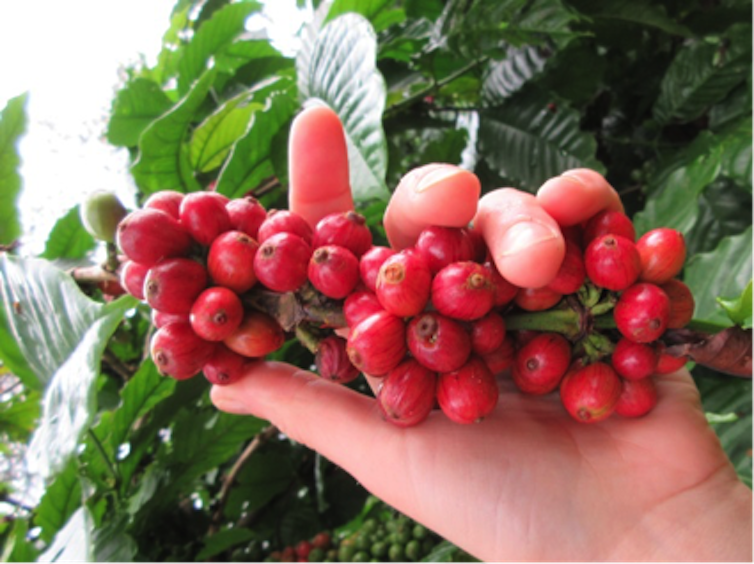
But why stop there? A potentially even more valuable ingredient is the chlorogenic acid. Although toxic to plants, as mentioned above, chlorogenic acid has potential as a natural health supplement for humans, because of its antioxidant, anticancer and neuroprotective properties.
The whole coffee production process is abundant in chlorogenic acid, particularly in raw coffee beans. Chlorogenic acid conversion efficiency is even better from green coffee pulp, with a 50% recovery rate, compared with 19% for spent coffee grounds.
As undersized and imperfect beans are discarded at this raw stage, many businesses have seized the opportunity to market green coffee extracts as a weight loss product, although more research is needed to confirm this potential.
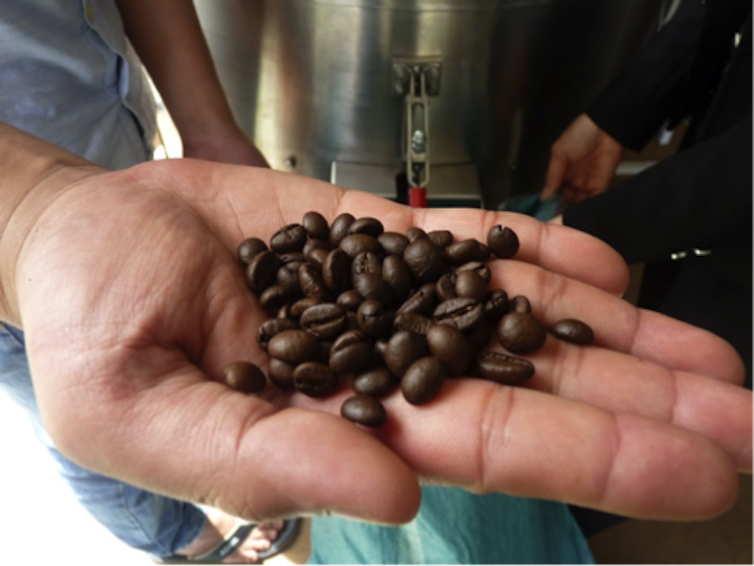
The list doesn’t end there. Coffee waste can be used to create a diverse list of chemicals, including enzymes and hormones for digestion of common biological compounds and to improve plant growth; and feedstocks for high-end crops such as mushrooms. Coffee oil has even been trialled as a fuel for London buses.
![]() With abundant waste supplies due to the popularity of coffee consumption, by recycling the byproducts, perhaps we can enjoy one of our favourite beverages without too much guilt.
With abundant waste supplies due to the popularity of coffee consumption, by recycling the byproducts, perhaps we can enjoy one of our favourite beverages without too much guilt.
Tien Huynh, Senior Lecturer in the School of Sciences, RMIT University
This article was originally published on The Conversation. Read the original article.
Container Deposit Scheme is now up and Running
At the last Clean Up Day the largest number of items collected by far was beverage containers (about 30% of items). Here’s hoping this situation will show improvement since the Return and Earn, as the Container Deposit Scheme is now called, started on 1 December.
As at 4 February, over 65 million containers have been collected. Many of these would have been previously in council collections. Containers can be returned to receive 10 cents per container or the refund can be donated to a charity. The price of drinks has gone up of course, mostly by 15 cents.
Click here to find a collection point near you and for more information about the types of containers that can be returned. Currently there is one in Ku-ring-gai and five in Hornsby.
Recycling Scheme for Paint – PaintBack
Australians buy more than 100 million litres of paint each year but around 5% of it ends up as waste, making paint and its packaging one of the biggest source of liquid waste into landfill. Paint contains chemicals such as volatile organic compounds and metals that can contaminate our groundwater and endanger human health. It is important to not put these items into your garbage bin.
Currently householders can take their leftover paint to collection centres set up every six months or so by local councils. Often the Clean Up Day is missed. Meanwhile the old paint tins accumulate in the storage sheds. The alternative is waste collection centres but they cost about $4.50 per litre tin, no matter how full.
A world first program, called Paintback, has been launched recently to offer professional and home painters an easy option for disposing of unwanted paint and packaging correctly. It expects to keep more than 45,000 tonnes out of landfill over the next five years.
To fund it, the paint manufacturers will add 15 cents a litre to the wholesale price of their products. There will be no further charge for anyone to dispose of paint at any designated collection point.
Paintback, a not-for-profit company, has ACCC regulatory approval to apply the waste levy and the support of Australian, state and territory governments. States and Territories have agreed to amend environmental regulations to allow trade painters to use the same scheme as DIY painters.
About 70 paint-specific collection points will be established over the next two years – starting with 12 in capital cities through a partnership with Cleanaway, which provides the expertise and a significant national footprint to collect and treat the waste paint and packaging. Existing council waste management centres also will be invited to participate.
The industry will fund research to find better uses for unwanted paint. Uses for waste paints could include extracting fossil fuels for energy consumption. The steel and plastic packaging is also recycled into new products.
Beverage Container Deposit Legislation – At Last – Almost
Just before Christmas, NSW Premier, Mike Baird, and the Environment Minister, Rob Stokes, announced that the Government favoured the introduction of state-based container deposit legislation (CDL). They seem to favour the current proposal developed by the Boomerang Alliance. This involves the installation of reverse vending machines in shopping centres and public places where people can return drink containers and retrieve the 10 cent deposit included in the purchase price. Council kerbside recycling collections would continue to operate.

